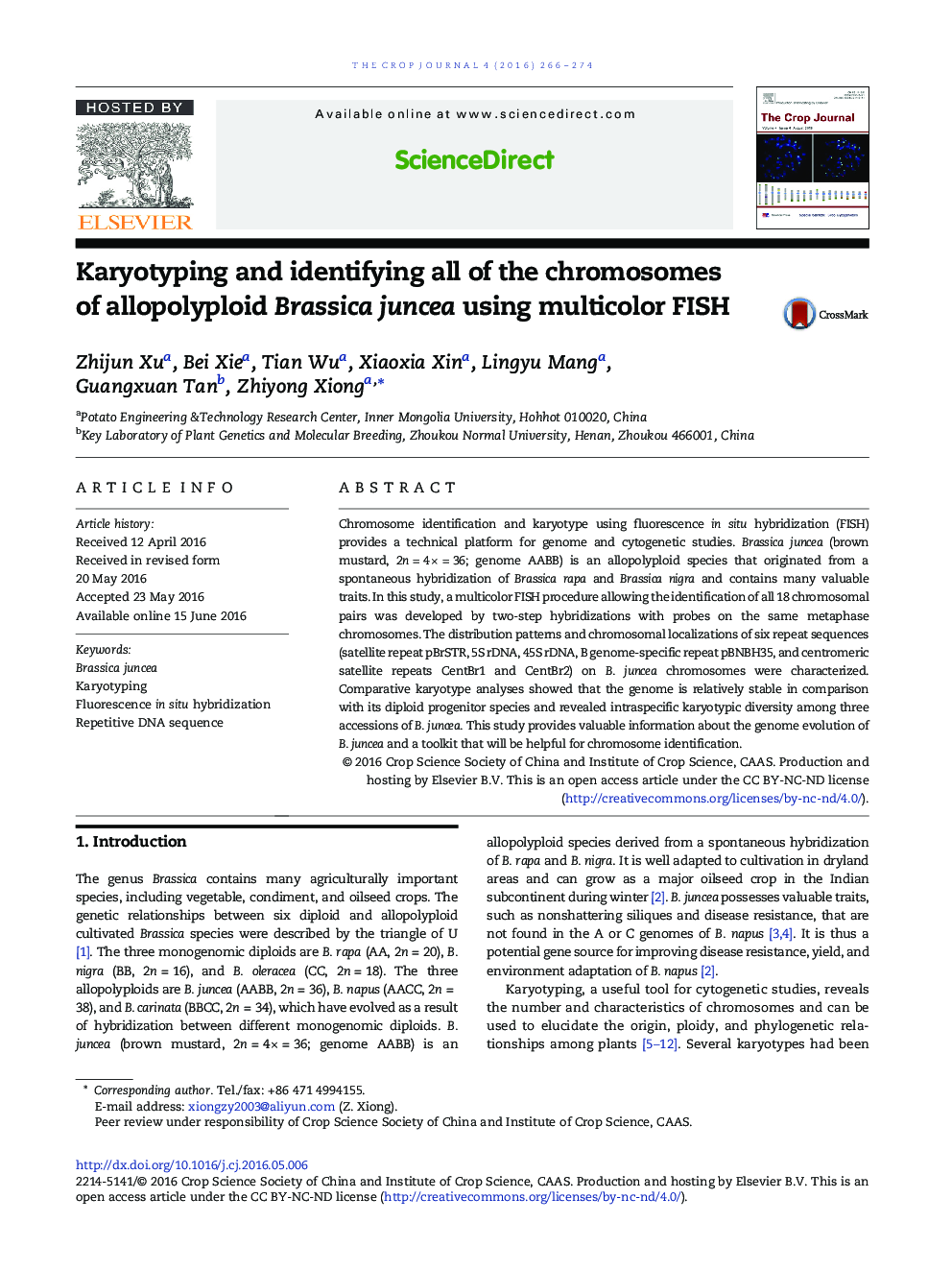| Article ID | Journal | Published Year | Pages | File Type |
|---|---|---|---|---|
| 2079401 | The Crop Journal | 2016 | 9 Pages |
Chromosome identification and karyotype using fluorescence in situ hybridization (FISH) provides a technical platform for genome and cytogenetic studies. Brassica juncea (brown mustard, 2n = 4 × = 36; genome AABB) is an allopolyploid species that originated from a spontaneous hybridization of Brassica rapa and Brassica nigra and contains many valuable traits. In this study, a multicolor FISH procedure allowing the identification of all 18 chromosomal pairs was developed by two-step hybridizations with probes on the same metaphase chromosomes. The distribution patterns and chromosomal localizations of six repeat sequences (satellite repeat pBrSTR, 5S rDNA, 45S rDNA, B genome-specific repeat pBNBH35, and centromeric satellite repeats CentBr1 and CentBr2) on B. juncea chromosomes were characterized. Comparative karyotype analyses showed that the genome is relatively stable in comparison with its diploid progenitor species and revealed intraspecific karyotypic diversity among three accessions of B. juncea. This study provides valuable information about the genome evolution of B. juncea and a toolkit that will be helpful for chromosome identification.
